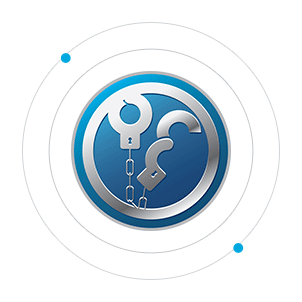How to Protect Yourself From Identity Theft
Identity theft is perhaps the biggest threat online today. You might've thought it was big company data breaches, but what do you think the cybercriminals are stealing from those data breaches? In most cases, it's not secret company blueprints – it's consumer information.
Cybercrime is an umbrella term, but the driving motivator behind nearly every type of cybercrime activity is identity theft. In this article we're going to take a look at the most common methodologies of identity theft, and ways to protect yourself.
Scam Detectors Most Trusted Websites in Online Security
- Guard.io (100): Surf the web safely. Clean up your browser, remove maliscious extensions and check for privacy violations.
- Incogni.com (100): Delete your personal data from the internet and protect against scams and identity theft.
- ExpressVPN (100) Stay secure and anonymous online - Best VPN Out There
Statistics on Identity Theft
In 2018, identity theft accounted for 14.85% of over 3 million reported frauds to the Federal Trade Commission. Credit card frauds accounted for over 167,000 of these reports.
This continued in 2019, as credit card fraud has been the most rapidly climbing identity theft claim for the past 6 years. This is most certainly in correlation to the increase in data breaches on companies that hold a lot of private consumer information.
Other common identity theft claims involve:
- Employment or tax-related fraud
- Phone and utilities fraud
- Bank fraud
- Loan or lease fraud
- Governmental documentation or benefits fraud
Credit card fraud impacts the most consumers above the age of 19, as that age group generally do not own credit cards yet. However, 49.7% of total fraud reports for the 19 and under age group were Employment and tax-related identity theft.
Child identity theft is also common, and goes undetected for much longer. Criminals can use a child's personal information, such as social security numbers, to open bank accounts and lines of credit. This can go on for years, until the child becomes an adult and discovers they have bad credit rating! While this most commonly occurs as familiar fraud, where an older family member is the one perpetuating the identity fraud, children's information can also be stolen in data breaches.
It's also possible for your driver's license number to be stolen without your card being physically stolen. This can happen on websites, fake or real, that ask for you to upload a driver's license or passport photo as proof of identity. You can read more about what to do in the event of a stolen driver's license here.
Most Common Online Attack Methods in Identity Theft Cases
Phishing: Email phishing is by far the most common method of stealing identities, and cybercriminals have become very sophisticated in creating convincing emails and fake websites. While modern protection layers in email software have done a good job of flagging many phishing emails, this can lead to people more readily trusting the phishing emails that manage to land in their inbox.
One technique to protect yourself is to just never open links from an email. If you receive an email from Paypal, Netflix, or any other online service notifying you of an account problem or things like that, just don't click any of the links. Open a new browser tab and type in the website address, where you can then verify if any account problems actually exist.
Formjacking: Another particularly troubling attack, formjacking is when cybercriminals inject malicious script into retail websites that allow them to steal consumer information from checkout forms. It's rather scary because it can be done on legitimate retail websites, and so consumers don't even have to fall for a phishing email.
You can read more about formjacking here, along with prevention tips such as browser add-ons that can prevent the malicious scripts from running.
Apps that share too much data: Mobile apps catch a bad rap for requesting a lot of “permissions”, like Facebook asking for access to your phone contacts, but there's usually a good and verifiable reason. It's actually the hidden stuff in apps you want to worry about, like background activities that harvest your personal data.
The next time you're in the app store, think to yourself, “do I really need this selfie app that promises to make me look 10 years younger and 20 pounds lighter?”.
Suspicious Activity Online: How To Report
Let your family and friends know about this article by sharing it on social media using the buttons provided. You can also officially report the scammers to the Federal Trade Commission using the link below:
How To Protect Yourself More
If you want to be the first to find out the most notorious scams every week, feel free to subscribe to the Scam Detector newsletter here. You'll receive periodic emails and we promise not to spam. Last but not least, use the Comments section below to expose other scammers.
Verify a website below
Are you just about to make a purchase online? See if the website is legit with our validator:
vldtr®


TOP 4 MUST-WATCH FRAUD PREVENTION VIDEOS
1. Top 5 Amazon Scams in 2024 2. Top 5 PayPal Scams in 2024 3. How To Spot a Scam Email in 2024
- Latest Posts by Selma Hrynchuk
-
Compromised Credit Card Scam
- -
Fake Google Chrome Update
- -
Facebook Privacy Notice Hoax
- All Posts













